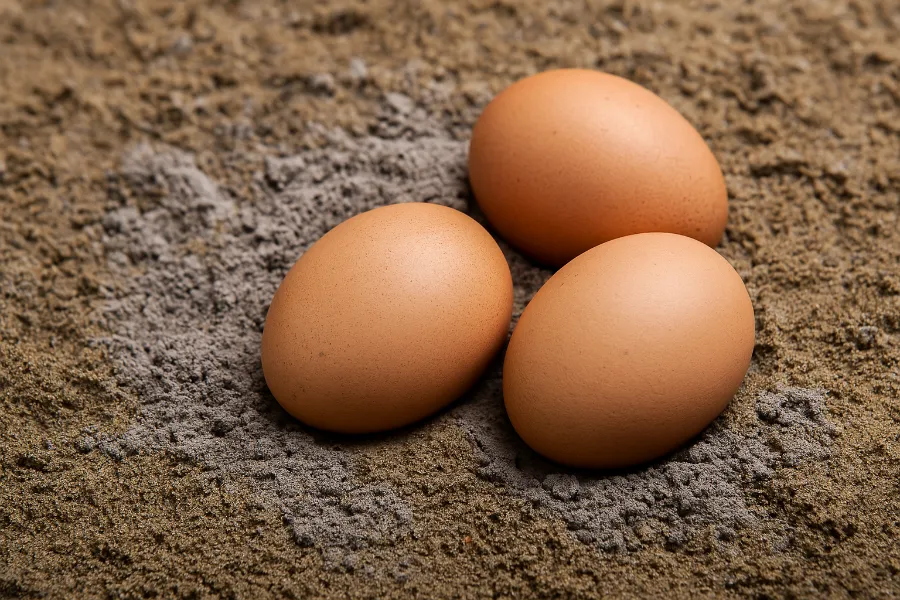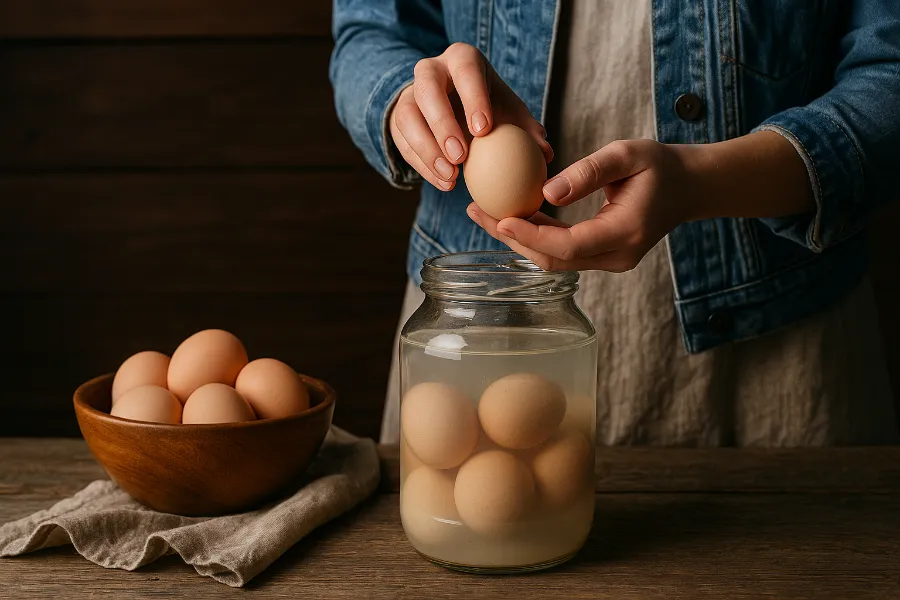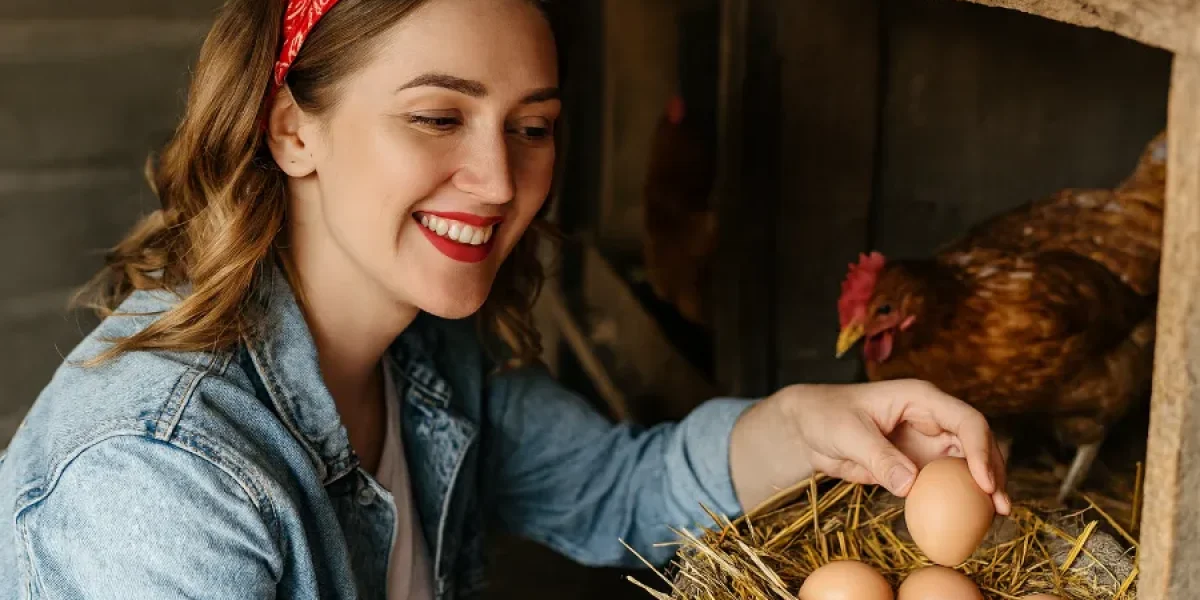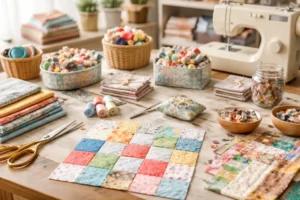Let me start with a confession: I used to be paranoid about dirty eggs. When I first started collecting from my backyard hens, I’d scrub every shell until it gleamed. But over time I discovered something surprising and liberating: unwashed eggs have a natural defense system built right in, and when handled properly, they often last longer and taste better than their sanitized supermarket cousins.
In fact, preserving that “bloom” (or cuticle) is one of the biggest secrets to keeping eggs safe and fresh. Over the years I’ve experimented with different methods, learned from mistakes, and now I’m here to share everything I know about raising, storing, and cooking with unwashed eggs.
Egg Preservation: How I Make My Eggs Last

When I talk about egg preservation, I’m really talking about protecting the quality and safety of eggs over time. For me, that means minimizing washing, controlling temperature and humidity, and using tried-and-true techniques to stretch their shelf life without losing flavor or structure.
The Bloom Is Your Friend
Right after a hen lays an egg, she coats it with a natural sealant called the bloom. This invisible layer helps block bacteria and reduce moisture loss. The moment you wash it off, that protection is gone. That’s why I almost never wash my eggs until I’m about to use them.
Storage Timeframes I Follow
- Room temperature (cool pantry): I’ll keep unwashed eggs out for up to 2–3 weeks—sometimes a bit longer if conditions are ideal.
- Refrigerated: If I want to stretch them further, I store unwashed eggs in the fridge, in their cartons, for 3–6 months in many cases.
- Long-term: On occasion, when I have an abundant laying period, I pull out water glassing (more on that below) or oiling techniques that let me hold eggs for nearly a year.
How I Organize My Eggs
- I label each egg carton with the date I collected them.
- I keep eggs pointy-end down (trapping the air cell at the “top”).
- I store them in the main part of the fridge (if refrigerated) rather than on the door, to reduce temperature swings.
- I inspect them regularly for cracks, slime, or any off smell.
Farm Eggs: Why Local Eggs Are Worth the Effort
If there’s one thing I’ve learned from raising my own flock, it’s that farm eggs are in a class of their own. There’s something deeply satisfying about gathering a dozen still-warm eggs, checking the nesting boxes, and knowing exactly where your food came from.
But farm eggs also carry a responsibility. Because they don’t go through the industrial washing and sanitizing systems that commercial eggs do, unwashed farm eggs rely on careful handling to stay safe. Still, I’ll take that trade-off every time—because flavor, freshness, and control over my food habits are worth it.
In fact, many homesteaders (and readers of sites like The Prairie Homestead) argue that washing eggs too soon invites bacteria into the shell by removing the protective bloom.

Egg Cooking: What I’ve Noticed with Unwashed Eggs
One of the rewards of using unwashed eggs is how they perform when you cook them. After years of experimenting, here’s what I see in my kitchen:
- Poached eggs hold their shape better—even with older eggs—because the whites stay firmer.
- Fried eggs produce less runny whites.
- Scrambled eggs come out richer, fluffier, and more stable.
- Baked goods made with fresh unwashed eggs tend to have better volume and texture.
I know that commercial food blogs often skip this nuance, but in a side-by-side test with store eggs, my baking and breakfast dishes definitely had a fresher taste with unwashed ones.
Egg Protection: How I Keep My Eggs Safe
If you’re keeping unwashed eggs, egg protection is always front of mind. Here’s how I do it:
Prevent Dirty Eggs in the First Place
- I line nesting boxes with fresh, clean bedding and change it out often
- I place roosts a bit higher than nest boxes so hens tend not to roost over the eggs
- I collect eggs at least twice a day (morning and evening)
These habits help reduce debris, droppings, or manure sticking to shells.
Gentle Cleaning Only When Necessary
Sometimes an egg is just too dirty to ignore. When it must be cleaned, here’s my method:
- Use warm water that’s slightly warmer than the egg to avoid creating a vacuum effect that pulls bacteria inside (cool water can do that).
- Don’t soak the egg—just gently wet the dirty spot and rub with a soft cloth or soft brush.
- Dry the egg immediately.
- Once cleaned, I refrigerate that particular egg and plan to use it sooner.
Many homesteaders warn that washing too early or too aggressively defeats the whole point of keeping eggs unwashed.
Discarding Eggs That Don’t Measure Up
If an egg is cracked, slimy, smells off, or has an unusual texture, I don’t hesitate to toss it. My goal is to preserve quality and health, not cling to questionable shells.
Water Glassing: My Favorite Long-Term Egg Preservation Method
When we have a surplus — especially in spring and summer when hens lay heavily — I turn to water glassing. It’s one of the most reliable egg preservation techniques I’ve found, and I trust it with dozens of eggs every year.
What Is Water Glassing?
Water glassing uses a solution of hydrated lime (pickling lime) and water. Eggs are submerged in this solution, which helps seal their pores and mimic the natural bloom barrier.
My Step-by-Step Process
- Pick fresh, clean (but unwashed) eggs—less than 24 hours old, no cracks.
- Mix solution: Roughly 1 ounce of hydrated lime per quart of distilled or filtered water (I always measure carefully).
- Submerge eggs: Pointy-end down in a food-safe crock or bucket.
- Cover them fully, ensuring no eggs stick out.
- Store in a cool, dark spot like my basement or root cellar.
- Label the container with the date so I know when I set this batch up.
How Long They Last
I’ve had eggs last 8–12 months using water glassing. Over winter I’ll pull them out for baking, cooking, or even daily egg use. Before cracking, I rinse them with warm water and dry them.
It’s not as flashy as many modern techniques, but water glassing has survived for centuries—and it works.

Extra Preservation Techniques I’ve Tried
While water glassing is my go-to, I’ve used a few other methods (with varying success) when I want backup options.
Mineral Oil Coating
After collecting eggs (still unwashed), I’ll gently dip or brush them with food-grade mineral oil. This acts like a pseudo-bloom, sealing pores. It’s less labor-intensive, and in my experience, extends fridge life by a few extra months.
Ash or Sand Storage
In cooler conditions, I’ve buried eggs in fine, clean wood ash or food-grade sand. The idea is to limit air exposure and slow moisture exchange. I’ve kept eggs for several months this way, though it’s less reliable than water glassing.
Freezing Cracked Eggs
For dishes like baking, I sometimes crack and lightly beat eggs, then freeze in ice-cube trays or containers. Not applicable to raw eggs in the shell, but useful if your surplus is huge.
My Egg Freshness Tests (aka How I Know the Egg Is Still Good)
Even with all the precautions, I trust a few simple tests before I crack an egg open. It’s just part of living with unwashed eggs.
Float Test
- I fill a bowl with water.
- If an egg sinks and lies flat, it’s fresh.
- If it stands on its end, it’s older but still usable.
- If it floats, I toss it.
Crack-and-Smell
I crack the egg onto a plate and give it a sniff. If it smells sulfurous or otherwise unpleasant, I don’t mess around—I’m not using it. Fresh eggs have a neutral smell.
Visual and Texture Check
When cracking, I look at how tall the yolk stands and whether the whites firm up. Weak whites or a flattened yolk are signs of aging.
Balancing Safety and Tradition
Now, I know some of the modern science folks (like in USDA or university egg storage guidelines) argue for washing and chilling eggs immediately to reduce bacterial risk. (See, for example, how USDA breaks down commercial egg handling. But many homesteaders—myself included—find a middle path: preserve the bloom, use careful storage and inspection, and only wash just before use or if absolutely needed.
The trick is not to view unwashed eggs as reckless, but as a tradition that works if done thoughtfully.
Final Thoughts from My Coop to Your Kitchen
If you’ve made it this far, here’s the bottom line: unwashed eggs are more than just a trendy homestead buzzword. They’re a time-tested way to preserve flavor, safety, and longevity—if you treat them with the respect they deserve.
From my own kitchen, I trust unwashed eggs for everyday egg cooking, occasional egg preservation, and safe handling that honors nature’s design. Methods like water glassing let me stretch my yields through slow seasons. And keeping that bloom intact gives me peace of mind that I’m working with food in its most natural form.
If you try this for yourself, here’s a simple mini action plan:
- Stop washing eggs immediately after collection (unless filthy).
- Clean your coop and nesting boxes to reduce dirt.
- Store unwashed eggs either on the counter (cool, dark spot) or in the fridge (in cartons).
- Label your eggs with dates.
- When surplus arrives, try water glassing or oiling.
- Always inspect, float-test, and smell before use.
This approach has kept my eggs safe, fresh, and delicious—year after year. I hope it does the same for you.
FAQs
Unwashed eggs are freshly laid farm eggs that still have their natural protective coating, called the bloom. This layer helps block bacteria and moisture loss, extending freshness.
Stored in a cool, dry place, unwashed eggs can last 2–3 weeks at room temperature. Conditions like heat and humidity may shorten that time.
Not right away. They can sit out for a couple of weeks, but refrigeration can extend their shelf life to 3–6 months.
It’s best to avoid washing until right before cooking. Washing removes the bloom and makes eggs more prone to bacteria.
Water glassing is an old preservation method using limewater to seal eggs. Done correctly, it can keep unwashed eggs fresh for up to a year.
Yes, as long as they’re handled properly and stored in a clean environment. Always test freshness with float or smell tests before eating.
Many people say yes—farm-fresh, unwashed eggs often have firmer whites and richer yolks. That makes them ideal for cooking and baking.













